Cornfield “Bomber” – The F-106 Delta Dart that Landed Itself After Pilot Ejected
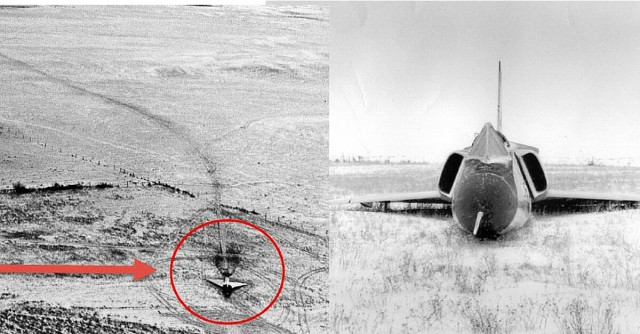
The Convair F-106 Delta Dart is a delta wing interceptor aircraft, not a medium range bomber. Yet when a unique event involving this airplane occurred in the frozen plains of Montana wheat country, someone coined the phrase, “The Cornfield Bomber,” and the name stuck.
A Cold War interceptor often called, “The Six,” this single engine jet propelled fighter could outperform Soviet intercontinental bombers. It was used extensively by the United States Air Force from the 1960’s well into the ‘80’s. The incident in question happened on February 2, 1970, in the area of the Louis and Clark Trail-a series of highways which roughly follow the track of the famed explorers during their journey from Saint Louis, Missouri to the Pacific Ocean. In other words: out in the middle of nowhere.
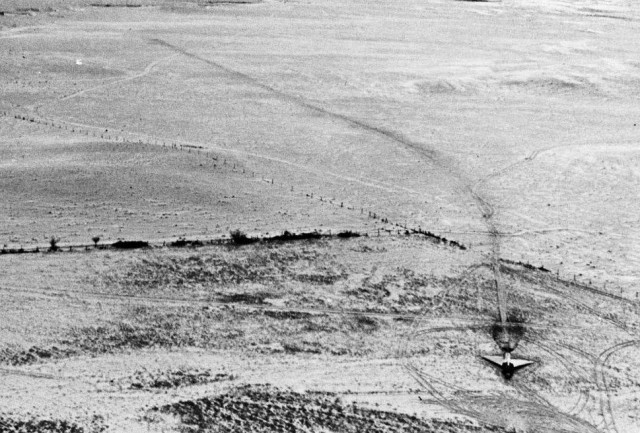
A flight of four Delta Darts took off on a training mission that day from Malmstrom Air Force Base in Great Falls, Montana. One pilot had trouble and returned to base while another split off to become the “opponent” in the exercise. The two remaining aircraft were piloted by an instructor and then Lt. Gary Foust. They quickly ascended to 40,000 feet but found the opponent approaching from below.
The objective was for one pilot to gain the advantage over the other and establish an acceptable firing position. The opponent came at Foust at Mach 1.9, inviting the chase. The two aircraft went into a vertical scissors maneuver during which Foust found he was losing control of the plane.
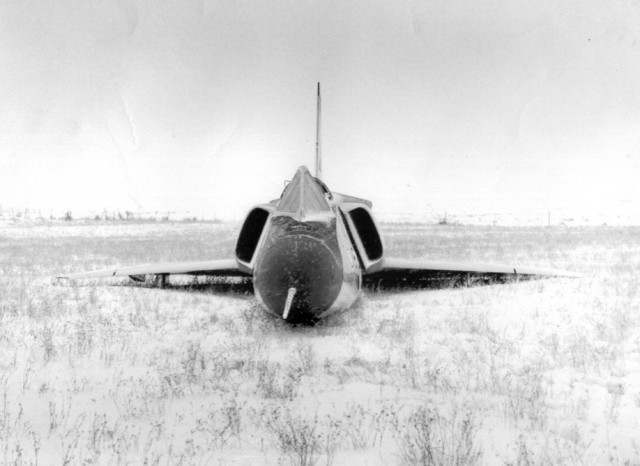
His Delta Dart spun into a left-hand flat spin, rotating on an unseen axis and was falling fast from 35,000 feet. Foust and his plane descended rapidly as he struggled for control using all the techniques he could manage. The instructor radioed to deploy the drag chute, which he did, but the spinning aircraft just wrapped the lines around its tail. Finally, at 8,000 feet, Foust ejected from the aircraft and parachuted to Earth. He landed in the Bear Paw Mountains, but his airplane had another plan.
Going into a nose dive after the ejection, the Delta Dart recovered from the spin and flew, unmanned, toward the horizon. A theory exists that the explosion from the ejection seat somehow shocked the plane out of the spin. Regardless, traveling at a straight and level trajectory. The “Six” pointed its nose away from the mountains and glided off into the distance.
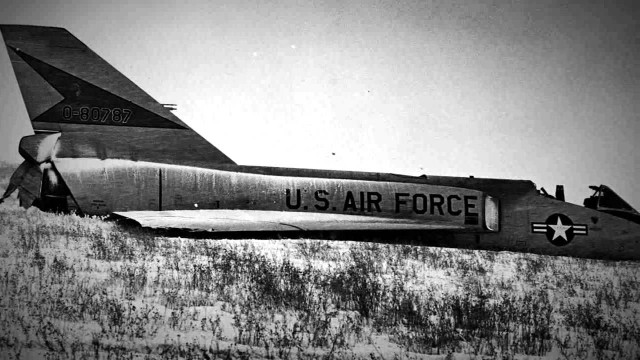
Several miles later, the plane landed in a wheat field outside Big Sandy, Montana. Snow was on the ground and likely cushioned the big jet as it skated through piles of rock, fences, and came to a rest far from any dwelling or road. The engine was still running and the jet did not lose fire for almost two hours. There was no crash. There was no fire. It just slid to a stop.
A law enforcement officer arrived on the scene after farmers reported a plane going down and radioed back to his department. No, they didn’t need the fire department and it appeared to be in one piece. His request was to find out how to turn off the engine. No such information was readily available, so he was advised to simply watch it until the military arrived.
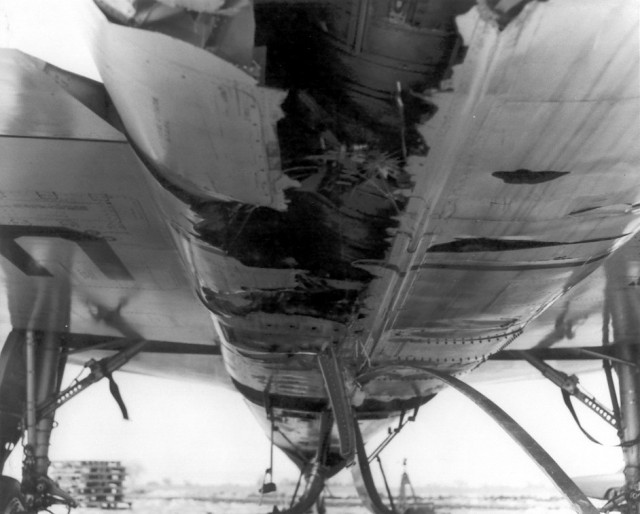
Occasionally the heat buildup from the jet engine would melt the snow and ground beneath it. With this contact with the ground, the small amount of thrust available surged the aircraft forward, further spooking onlookers and adding to the mystery of the strange landing.
After being retrieved by citizens from the snowy mountains on a snowmobile, Lt. Foust learned his plane had landed itself. Personnel from Malmstrom assessed the situation and determined the aircraft was salvageable. In fact, it was sent to McClellan AFB for repairs and, after a few months, returned to service. Foust was sent to Tyndall AFB in 1979 for IWS training.
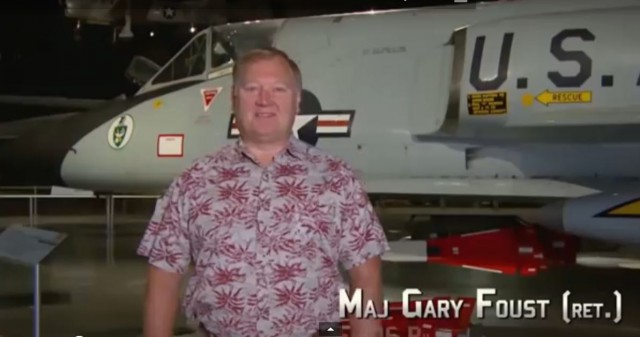
He didn’t know it, but the officer in charge made sure he was assigned to fly tail number 58-0787-the plane that landed itself after Foust had ejected. By then reaching the rank of Major, he was happy to fly it again and learn it had survived and served well. In 1986, the aircraft was taken to the National Museum of the United States Air Force in Dayton, Ohio and is on display there with over 360 other aircraft.
By Elaine Fields Smith
Images: US Airforce / Wikipedia
No comments:
Post a Comment